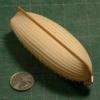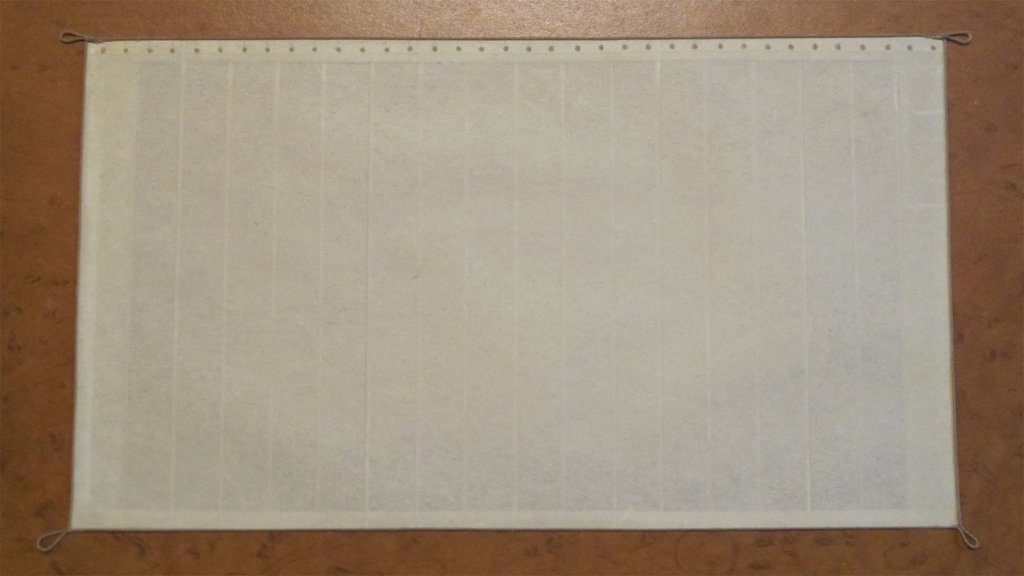-
Posts
13,299 -
Joined
-
Last visited
Content Type
Profiles
Forums
Gallery
Events
Everything posted by druxey
-
You might find masking off so much of the sail to be a pain, Wefalck.
-
How very inconvenient of the wreck to have planking missing at the critical juncture. How much structural weakness would a straight line of butts have here?
- 599 replies
-
- sidewheeler
- arabia
-
(and 4 more)
Tagged with:
-
For better integrity of the sail, while I use a similar technique as Wefalck (April 20), my doublings of the seams are added with opaque acrylic paint ruled on using an old-fashioned draftsman's bow pen. Grommets are also of acrylic paint.
-
Thanks for your update, Remco! Enjoy Stockholm.
- 1,215 replies
-
- sloop
- kingfisher
-
(and 1 more)
Tagged with:
-
Must be some feeling of accomplishment at this stage, Michael. Enjoy your Canada Day weekend.
- 749 replies
-
- albertic
- ocean liner
-
(and 2 more)
Tagged with:
-

HMCSS Victoria 1855 by BANYAN - 1:72
druxey replied to BANYAN's topic in - Build logs for subjects built 1851 - 1900
I agree that full-size wood graining is different from scale work. However, (depending on scale) I've substituted old toothbrushes or worn out regular 'flat' brushes for graining tools effectively. For smaller scales, glazes over a base color as Wefalck suggests would be the way to go.- 1,004 replies
-
- gun dispatch vessel
- victoria
-
(and 2 more)
Tagged with:
-
I wondered whether the project had also foundered - hadn't seen an update in months. Congratulations to you and your crew for successfully completing Captain Teodor's ship and the Captain himself! A very convincing underwater diorama indeed, Sam. Now, what can you possibly come up with next?
-
Very nice work blending in the original paintwork with the new on the ship's side. It is so difficult to match both color and reflectance. Well done, Michael!
- 749 replies
-
- albertic
- ocean liner
-
(and 2 more)
Tagged with:
-
Thanks for this, Kevin!
-

HMCSS Victoria 1855 by BANYAN - 1:72
druxey replied to BANYAN's topic in - Build logs for subjects built 1851 - 1900
Painting faux wood is an art in itself. Look in the library for a book on faux finishes. That will get you the idea. I usually start with an undercoat of either raw umber or raw siena, depending on the kind of wood I'm imitating, then overcoat it with glazes of darker color, dragged or dry-brushed, depending on the look I'm after. Try this on test pieces until you get a look you like.- 1,004 replies
-
- gun dispatch vessel
- victoria
-
(and 2 more)
Tagged with:
-
Welcome back, Michael. And about time, too! We've missed you.
- 749 replies
-
- albertic
- ocean liner
-
(and 2 more)
Tagged with:
-
Lovely as usual. How will you get the dust off the lower deck?
-
mezza lune = 'half moon' or semi-circle (see Woodrat, post 359).
- 263 replies
-
- nave tonda
- round ship
-
(and 2 more)
Tagged with:
-
I have to agree with Roger's remarks. I've seen historic models with 'restored' or re-jigged rigging that is patently wrong. One I examined recently had an original line expended by wrapping it repeatedly around the heel of the bowsprit!
-
I'm sure that there were variances in cleat design from shipyard to shipyard. (You can always use that as an unanswerable argument!) Mast trucks had two small sheaves, one on either side, for hoisting signals or flags. They were attached to the mast head with a small square mortise and tenon. Steel describes them as 'an oblate spheroid'!
-
And you are a musician as well? There is no end to your talents!
- 1,035 replies
-
- royal katherine
- ship of the line
-
(and 1 more)
Tagged with:
-
The scuttle (rather than hatchway) to the bread room was a lid in two layers. The top layer is the thickness of the deck plank, then a thinner lower layer running crossways and narrower all round, providing the lip. There are two ringbolts on opposite diagonal corners for lifting the lid.
About us
Modelshipworld - Advancing Ship Modeling through Research
SSL Secured
Your security is important for us so this Website is SSL-Secured
NRG Mailing Address
Nautical Research Guild
237 South Lincoln Street
Westmont IL, 60559-1917
Model Ship World ® and the MSW logo are Registered Trademarks, and belong to the Nautical Research Guild (United States Patent and Trademark Office: No. 6,929,264 & No. 6,929,274, registered Dec. 20, 2022)
Helpful Links
About the NRG
If you enjoy building ship models that are historically accurate as well as beautiful, then The Nautical Research Guild (NRG) is just right for you.
The Guild is a non-profit educational organization whose mission is to “Advance Ship Modeling Through Research”. We provide support to our members in their efforts to raise the quality of their model ships.
The Nautical Research Guild has published our world-renowned quarterly magazine, The Nautical Research Journal, since 1955. The pages of the Journal are full of articles by accomplished ship modelers who show you how they create those exquisite details on their models, and by maritime historians who show you the correct details to build. The Journal is available in both print and digital editions. Go to the NRG web site (www.thenrg.org) to download a complimentary digital copy of the Journal. The NRG also publishes plan sets, books and compilations of back issues of the Journal and the former Ships in Scale and Model Ship Builder magazines.




